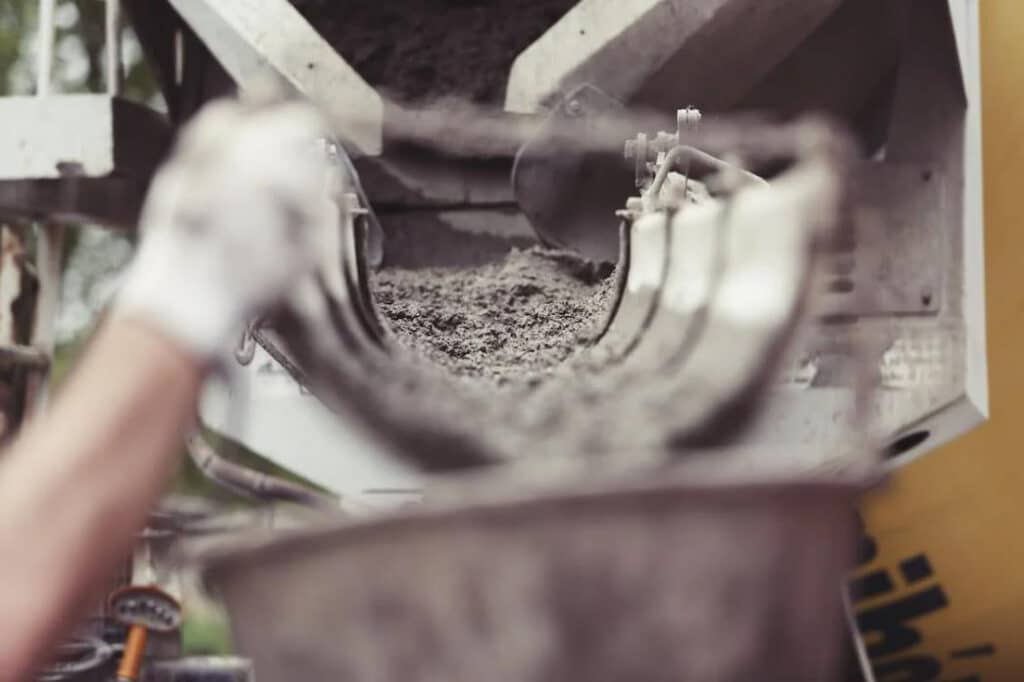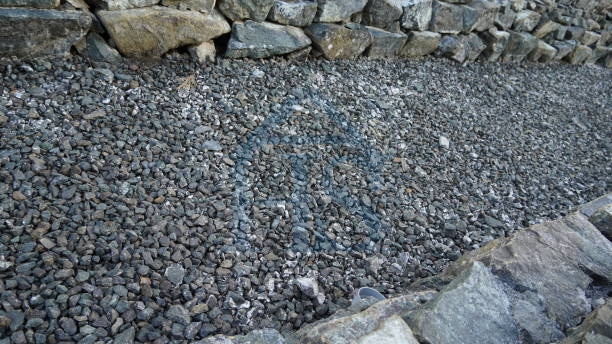RCC is a zero-slump, low-water-content concrete mixture that is compacted with vibratory rollers. It is commonly used in pavements, dammen, and heavy-duty industrial floors due to its high strength and durability.
How Silica Fume Enhances RCC
When silica fume is added to RCC, it reacts with the calcium hydroxide produced during cement hydration, forming calcium silicate hydrate (CSH). The resulting CSH is denser and stronger, which improves the overall properties of the concrete. Verder, the ultrafine particles of silica fume fill the voids between cement particles, creating a tighter and more impermeable concrete matrix.
Benefits of Silica Fume in RCC
Incorporating silica fume in RCC offers numerous advantages, inbegrepen:
Verbeterde kracht
Silica fume increases both the compressive and tensile strengths of RCC, making it more suitable for heavy-duty applications.
Verhoogde duurzaamheid
The denser CSH formed by the reaction between silica fume and calcium hydroxide enhances the durability of RCC, protecting it from chemical attacks and reducing its long-term maintenance requirements.
Verminderde doorlaatbaarheid
Silica fume’s ultrafine particles fill the voids in the concrete matrix, reducing permeability and improving the concrete’s resistance to water and chloride ion penetration.
Enhanced Abrasion Resistance
The addition of silica fume to RCC improves its abrasion resistance, making it more resistant to wear and tear, particularly in industrial settings.
Better Freeze-Thaw Resistance
Silica fume’s contribution to a denser concrete matrix results in increased freeze-thaw resistance, making RCC more suitable for use in cold climates.
The Role of Silica Fume in Reducing Cement Content
One of the key benefits of using silica fume in RCC is that it allows for a reduction in cement content without compromising the concrete’s performance. By partially replacing cement with silica fume, the overall cost of the concrete mix can be reduced, and the environmental impact of cement production can be minimized.
Case Studies: Successful Applications of Silica Fume in RCC

1. Bakun Dam, Maleisië
Completed in 2011, the Bakun Dam is the tallest concrete-faced rockfill dam in Southeast Asia. Silica fume was incorporated in the RCC mix to improve the dam’s strength, duurzaamheid, en weerstand tegen chemische aanvallen. Als resultaat, the dam has shown exceptional performance in withstanding the harsh tropical environment and the immense pressure of the impounded water.
2. Gibe III Dam, Ethiopia
The Gibe III Dam, completed in 2016, is the third-largest RCC dam in Africa. Silica fume played a crucial role in enhancing the concrete’s strength and durability, making it suitable for the aggressive environment, which included exposure to fluctuating water levels and variable temperatures. The dam now generates 1,870 MW of power, contributing significantly to Ethiopia’s electricity supply.
3. Upper Stillwater Dam, Verenigde Staten
Located in Utah, the Upper Stillwater Dam was completed in 1987 and was the first major RCC dam in the United States. The use of silica fume in the RCC mix resulted in increased compressive strength, verminderde doorlaatbaarheid, and enhanced durability. These improvements allowed the dam to withstand the stresses associated with its primary function as a flood control and water storage facility.
These successful applications of silica fume in roller-compacted concrete demonstrate the material’s versatility and potential in improving the performance of various types of projects across the globe.
Conclusie
The incorporation of silica fume in roller-compacted concrete provides numerous advantages in terms of strength, duurzaamheid, permeability, slijtvastheid, and freeze-thaw resistance. Verder, de milieuvoordelen van het gebruik van silicafume, inclusief een verlaagd cementgehalte en hergebruik van industrieel afval, maak het een duurzame optie voor moderne bouwprojecten. Echter, juiste hantering en veiligheidsmaatregelen moeten worden nageleefd om de uitdagingen en beperkingen te overwinnen die gepaard gaan met het gebruik van silicafume in RCC.
Veelgestelde vragen
- Wat is de typische dosering van silicafume in RCC?
De dosering van silicafume in RCC varieert afhankelijk van de projectvereisten. Echter, het varieert meestal van 5% tot 15% per gewicht cement.
- Can silica fume be used with other aanvullende cementgebonden materialen?
Ja, silica fume can be used in combination with other supplementary cementitious materials, such as fly ash and slag, to further enhance the properties of RCC.
- Does the addition of silica fume affect the curing process of RCC?
The addition of silica fume may require adjustments to the curing process due to its high reactivity. Adequate curing is essential to ensure the desired performance of RCC containing silica fume.
- Is silica fume suitable for all types of concrete projects?
While silica fume offers numerous advantages, its suitability depends on the specific project requirements and desired properties of the concrete. It is essential to consult with engineers and material suppliers to determine the appropriate use of silica fume in a given project.
- How is silica fume added to the RCC mix?
Silica fume can be added to the RCC mix either as a dry powder or as a slurry, depending on the requirements of the project and the concrete production process.





